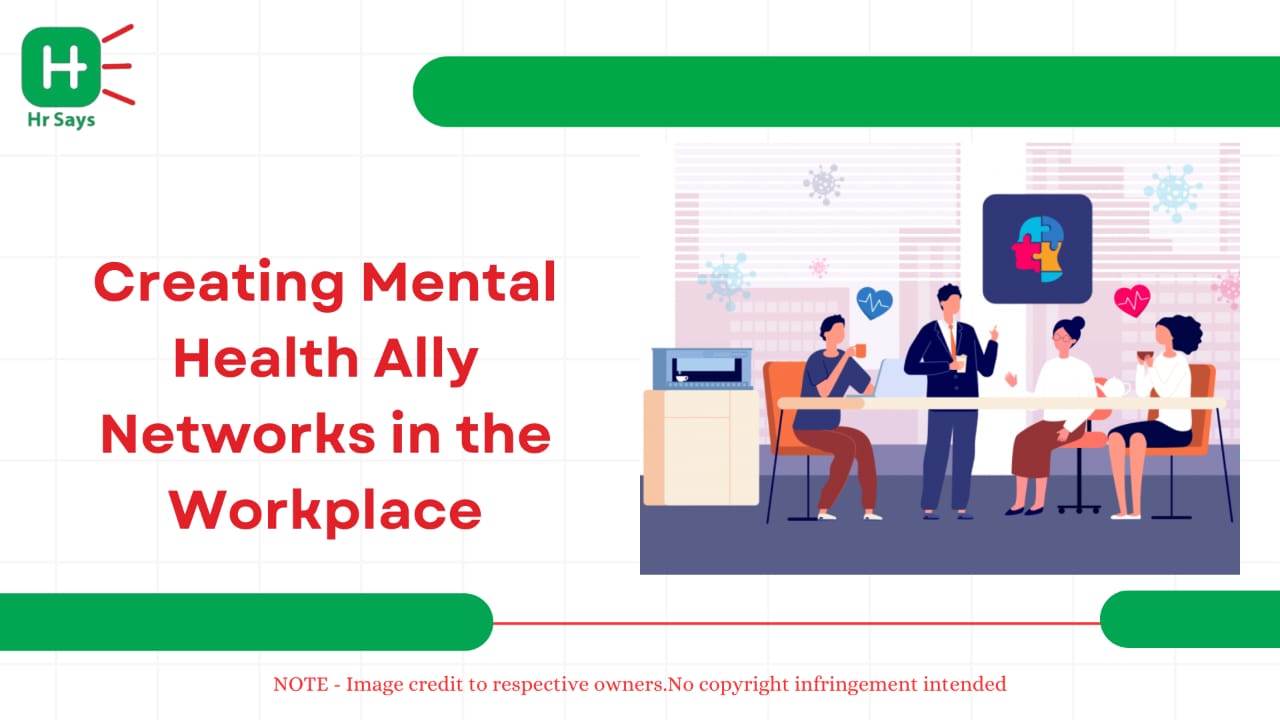Do you have the experience of just asking yourself what it is that makes a place of work to be safe? It is not only about the open door policy or wellness program. It is FYB people who can listen, assist, and encourage one another when the times are difficult. Mental-health ally networks come there, to transform the way companies take care of their employees behind the scenes.
What Are Mental Health Ally Networks?
Mental-health allies networks refer to groups of trained employees that serve as sources of contacts with stressed, burnt-out, or emotionally challenged colleagues. They facilitate psychological safety as it helps to build the atmosphere where individuals feel to be heard and honored.
These allies aren’t counselors, but they bridge the gap between professional help and peer support. They encourage conversations about mental health awareness, helping break the long-standing stigma that often surrounds it in workplaces.
Why Every Workplace Needs Mental Health Allies
A workplace without mental health allies often misses subtle distress signals among employees. Emotional fatigue, isolation, and anxiety can easily go unnoticed. But when ally networks exist, they help build a culture of empathy.
Key benefits include:
● Early identification of emotional distress
● Increased employee engagement and retention
● Stronger sense of belonging and trust
● Reduction in workplace stress and absenteeism
In short, these networks act as a heartbeat of compassion in the corporate setup.
Building an Effective Mental Health Ally Program
Creating such a network isn’t about assigning roles. It’s about nurturing trust. The process should be thoughtful, inclusive, and ongoing.
Step 1: Gain Leadership Support
Without leadership buy-in, initiatives lose momentum. Leaders should communicate openly about mental health and support employee wellbeing programs as part of company culture.
Step 2: Identify the Right People
Allies should be empathetic listeners, approachable, and discreet. They must be willing to learn and handle sensitive conversations with care. Volunteering should be encouraged, not enforced.
Step 3: Provide Training and Resources
Training ensures that allies are equipped to respond appropriately. Workshops on emotional intelligence, mental health first aid, and active listening are essential. Access to internal and external resources helps them guide colleagues toward professional help when needed.
Step 4: Promote Awareness and Accessibility
Regular communication, posters, or team meetings can make the program visible. Employees should know who the allies are and how they can be reached confidentially. Accessibility builds trust.
Challenges and How to Overcome Them
Resistance or hesitation is natural. Employees may fear judgment or question confidentiality. Overcoming this requires consistency. When organizations consistently show compassion and protect privacy, people slowly begin to open up.
Regular check-ins, feedback sessions, and ongoing training help sustain trust. A mental health ally network isn’t a one-time project; it evolves with workplace culture.
Conclusion
A supportive workplace isn’t built overnight. It takes small, steady steps by people who care. Mental health ally networks represent that shift—from silence to support, from stigma to strength. When empathy becomes part of the work culture, productivity and wellbeing follow naturally.

 Mental health ally networks promote psychological safety and emotional support in workplaces.
They train employees to identify distress, encourage open dialogue, and create an empathetic
environment that strengthens organizational wellbeing.
Mental health ally networks promote psychological safety and emotional support in workplaces.
They train employees to identify distress, encourage open dialogue, and create an empathetic
environment that strengthens organizational wellbeing.












.jpeg)












.jpeg)